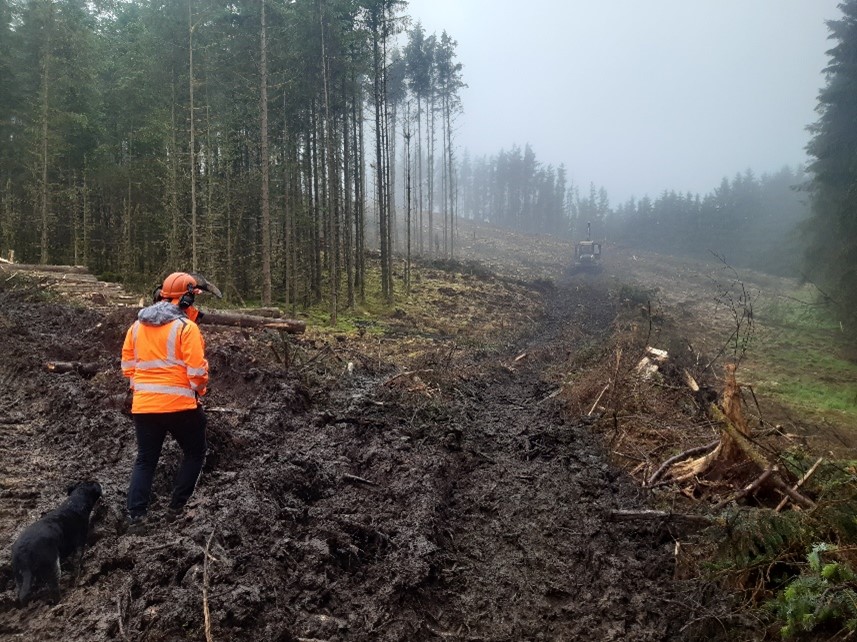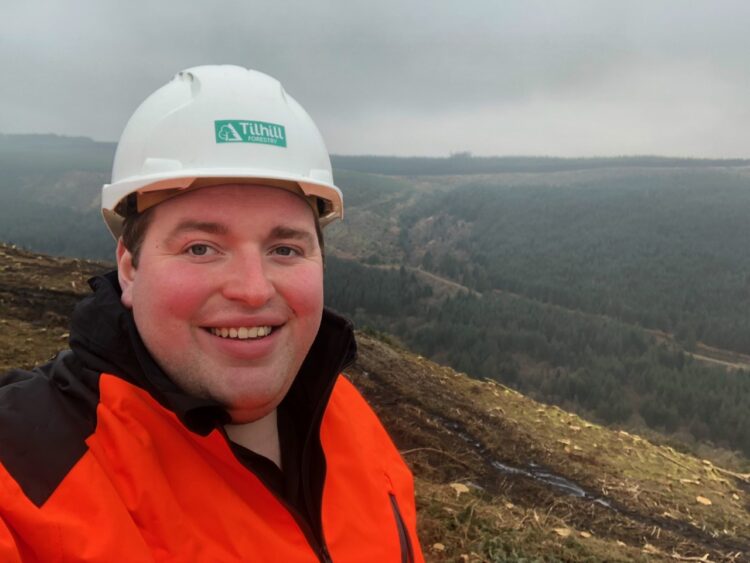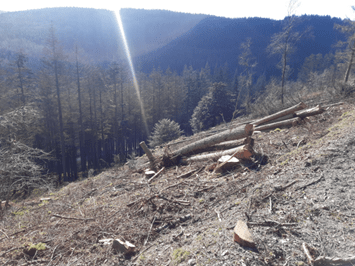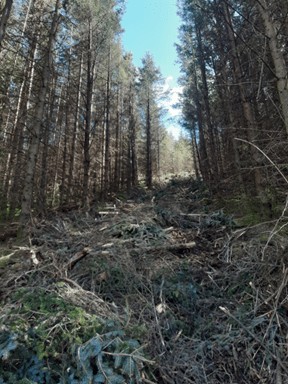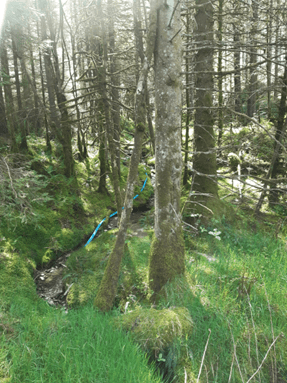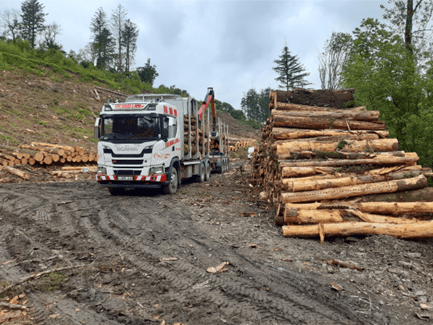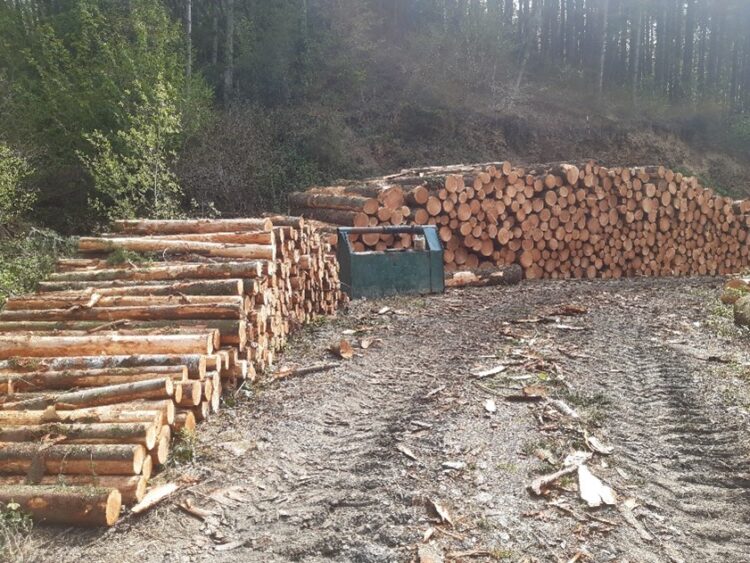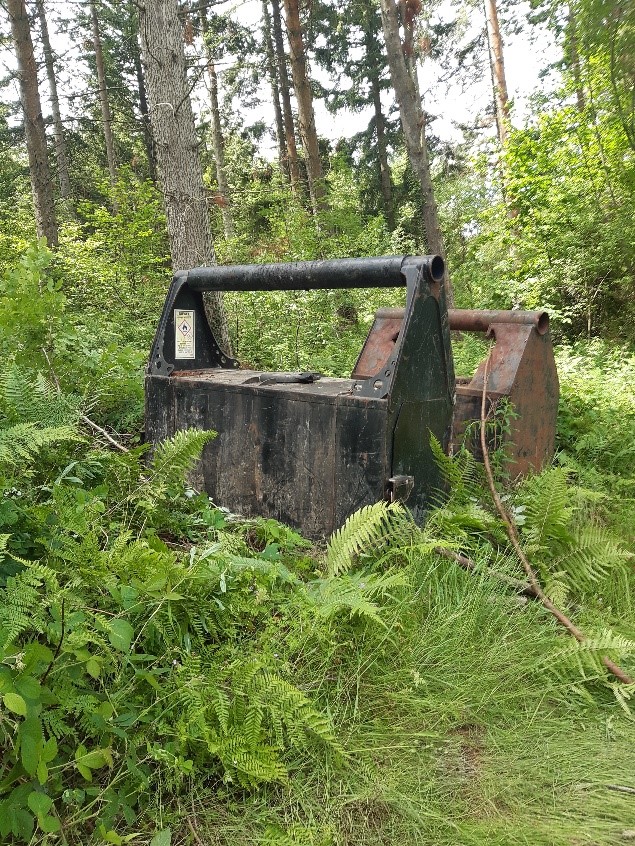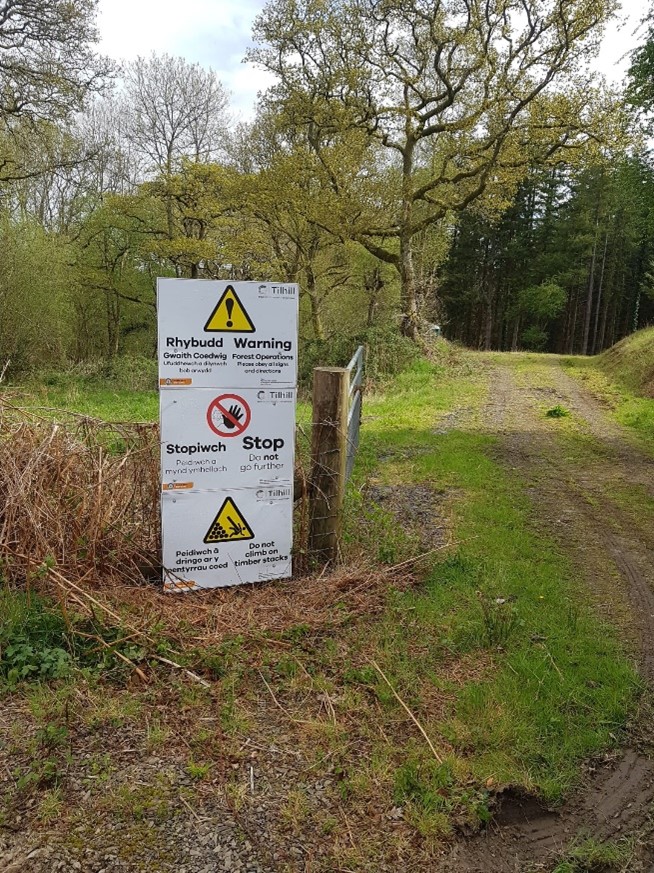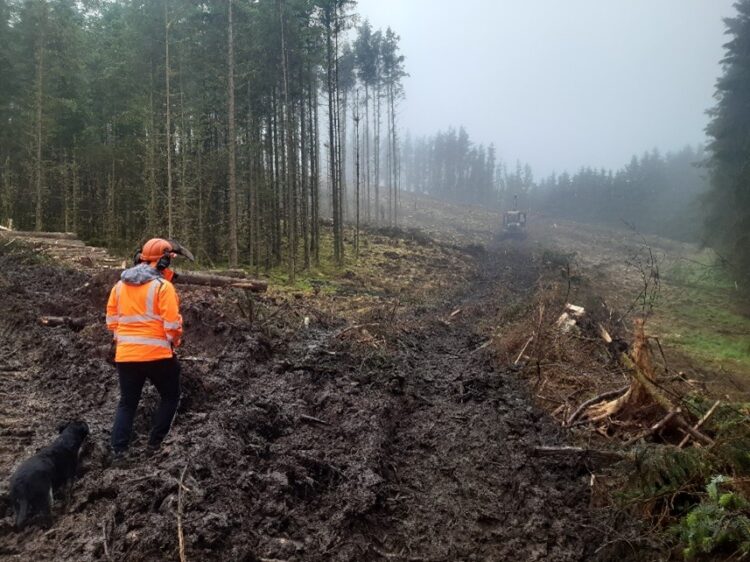A day in the life
As an Assistant Harvesting Manager one of my main roles is to undertake site visits and ensure site diaries are kept up to date. These diaries act as an official record of all discussions and observations that take place on site whether these are with the contractors, landowners or members of the public. While on site harvesting managers are constantly surveying an area for any potential issues.
Personally, I like to start my visit with the end of the process. I check the timber stacks and products first. The main considerations relating to the stacks are their height, location and their stability. Within forestry, a stack height is dictated by product length, for example, 4.9m long logs can be stacked to a height of 4.9m, the haulier also needs to be able to see across the top of the stack.
Site visits
As an Assistant Harvesting Manager one of my main roles is to undertake site visits and ensure site diaries are kept up to date. These diaries act as an official record of all discussions and observations that take place on site whether these are with the contractors, landowners or members of the public. While on site harvesting managers are constantly surveying an area for any potential issues.
Personally, I like to start my visit with the end of the process. I check the timber stacks and products first. The main considerations relating to the stacks are their height, location and their stability. Within forestry, a stack height is dictated by product length, for example, 4.9m long logs can be stacked to a height of 4.9m, the haulier also needs to be able to see across the top of the stack.
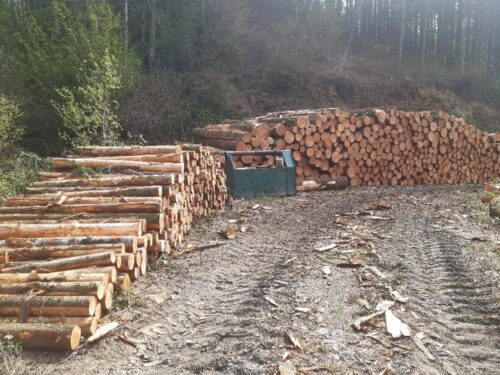
Signage
From there I normally move on to check the signage. I am looking to make sure the correct signs are in place, that they haven’t been removed, that they are stable in the ground or well-fixed to the post and that they are clearly visible. If any of these conditions aren’t met, then I swiftly have to take action and sort.
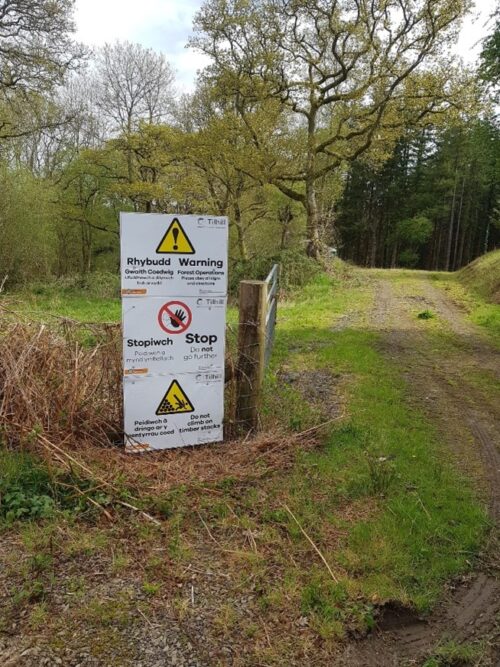
Assessments
Once I leave the stacking area, the assessment of the overall site and the workings starts. There are several areas to focus on while on site. They are damage to the site, such as the presence of litter or waste, ensuring that the felling practices and health and safety on site are being adhered to. and checking any damage to retained trees on the ground, or to the forest road. If any of these are identified, then I will speak to the contractor and discuss my findings and how they might have evolved. Once the cause is identified then mitigations will be put in place and correctional actions implemented.
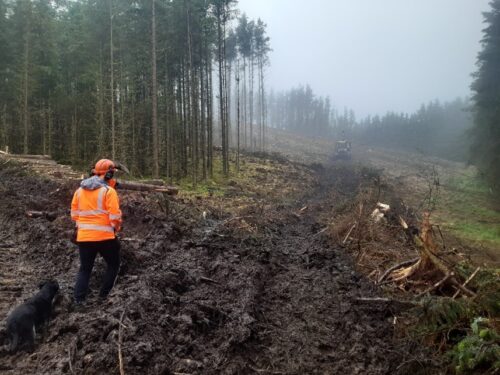
Litter and waste
Next is litter and waste. ‘‘Litter’ in this case is defined as non-forestry related waste and ‘waste’ is forestry related waste. While walking around you are actively looking for items such as oil drums, grease cartilages and rags. As well as any litter that looks like it might have come from the operator. If any of these are found, then the operators are asked to clear it up immediately.
Felling processes
Then I check the felling processes. Felling processes include the method of felling, for example, whether by harvester machines or chainsaw operators. I also check the stump height and the brashmat quality. These all have lots of nuances within these areas that can vary from site to site and species to species. Overriding all of this is the check on the health and safety on the site, this includes wearing the correct PPE for the work being carried out, that safe working distances are being observed, and first aid kits and certificates for the varying equipment are up-to-date and present.
These are the most important areas I focus on when visiting a site. If these areas don’t meet the standards that Tilhill require then the site will be put ‘on stop’ until they are correctly implemented. We work closely with our contractors to ensure standards are met and that these requirements are implemented before works begin on site.
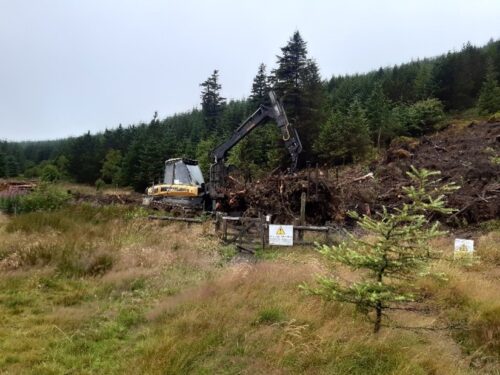
Diffuse pollution
An area that is always covered on a site visit is the risk of diffuse pollution. All watercourses will be checked for signs of diffuse pollution or sedimentation within the watercourse. The extraction routes will also be checked to make sure water doesn’t flow down them. If the potential for pollution is spotted, then mitigation will be implemented immediately. Depending on the site conditions then some mitigation maybe implemented prior to start.
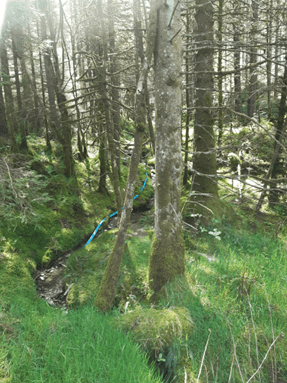
Finally...
Finally, most site visits will end with a discussion with at least the main contractor on site to discuss any other issues or concerns the contractor may have and to go over the next steps in the harvesting operations.
As you can see, the job is really varied and enables me to get out to site frequently. This is what I joined Tilhill for and can highly recommend considering forestry and harvesting as a career
Join the Graduate Programme
Opens December – February




